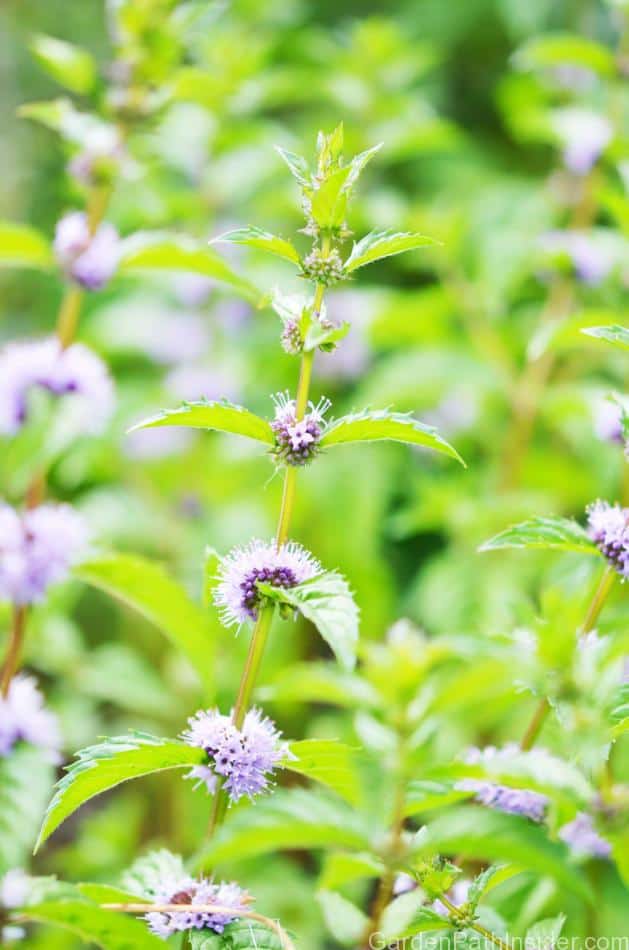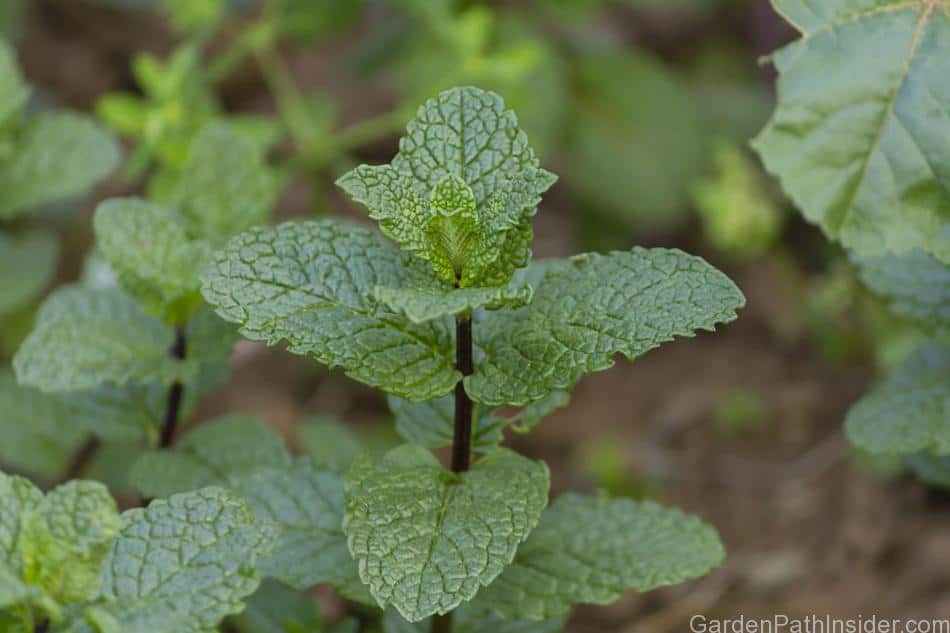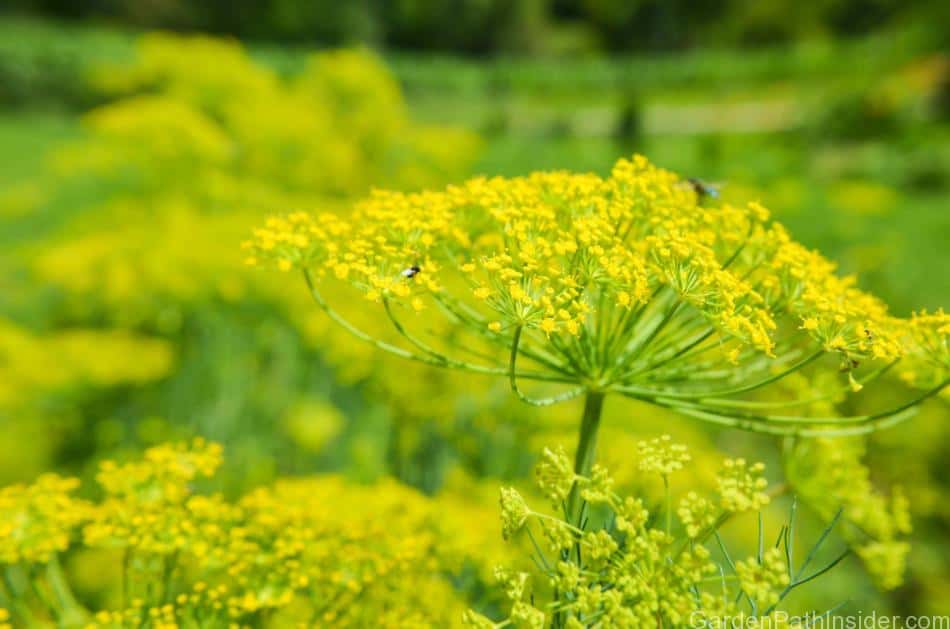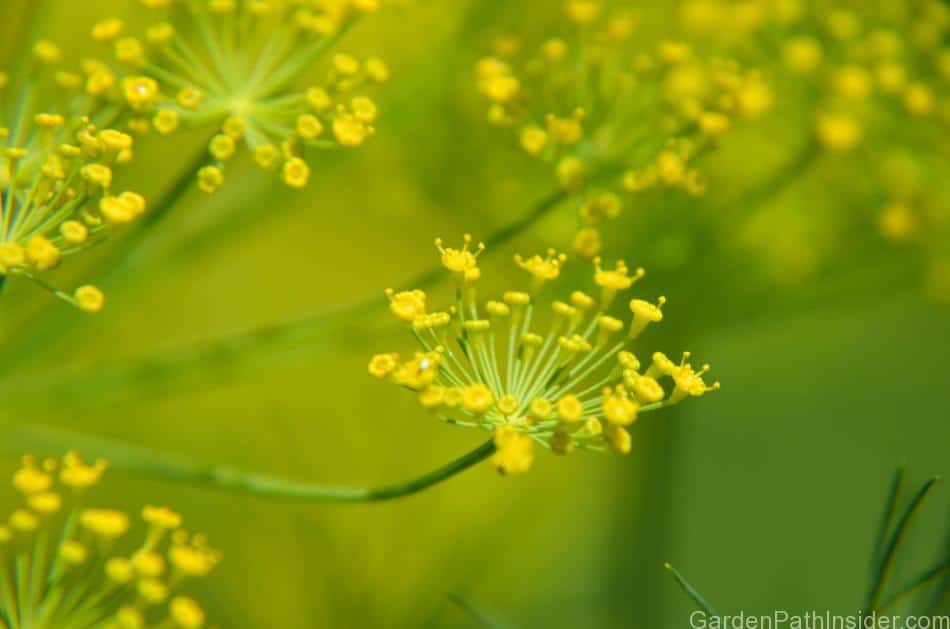
Mint and dill are flavorful herbs that make a great addition to every herb garden. Both herbs are easy to grow and will thrive indoors during cold months.
Mint and dill should not be planted together in the same container, as mint is an invasive species that will quickly overtake its growing space. Mint and dill are excellent companion plants to grow next to each other in separate containers. Both herbs are effective at repelling pests and parasites, protecting each other and any surrounding plants.
Mint and dill are wonderful low-maintenance herbs that add flavor to any meal or beverage. With minimal setup and maintenance, you can cultivate an abundant herb garden indoors or outdoors.
Overview of Mint

Mint is a fragrant perennial herb, that is grown for its edible leaves. Mint leaves are used in meals, beverages, desserts, candies, and chewing gum. Mint requires moist fertile soil that is well-draining and loosely packed.
Mint is a great culinary herb that thrives grown both indoors and outside in containers or garden beds. A single mint plant can quickly grow to a serious mint patch during the growing season and should be planted in a contained growing space to avoid a mint takeover of your garden.
Overview of Dill

Dill is a biennial herb, meaning the dill plant drops its seeds at the end of the growing season, and those seeds will sprout and grow the following season. The fragile leaves of the dill plant are harvested for use in the kitchen, and in many snack favorites from dill pickles to dill potato chips.
Dill can be easily grown from seeds, though starting with small established plants will save several months and allow for an earlier harvest. A great herb for any container garden, as dill can grow indoors year-round. Dill also is effective for repelling garden pests and parasites.
Container & Growing Space Requirements
Mint will quickly grow and spread in most growing conditions, making it a top priority to adequately contain your mint garden.
Growing mint in containers is a great way to keep the mint contained and provides portability to the plant. Potted mint can spend its summers outside and then come indoors for the colder months. The mint will grow slower during the winter months indoors, though it will still provide a harvest of fresh flavorful mint leaves.
Mint will grow to fill any sized container, so select a size that fits your growing space. For optimal growth use a container that is at least 8 inches (20cm) deep and has adequate drainage holes in the bottom of the container.
A Dill seed sprouts into a single stalk plant that grows as tall as 36 inches (91cm). The roots of the dill plant grow deep to support the tall stalk and fragile leaf clusters.
Containers for dill plants should be at least 8 inches deep (20cm) to accommodate for the long roots of the dill.
Clay pots are my first choice for any container garden as the clay is porous and allows the excess water to thoroughly drain from the soil. Additionally, I will place all clay pots on clay dishes to collect any excess water that runs from the drainage holes.
Growing dill outdoors is also an option, though most cold climates will require dill to be planted annually as the harsh winters will kill the plants.
Dill can grow in most soil types, and planting seeds in your garden bed is as easy as sprinkling the seeds on the growing area and then watering the seeds thoroughly.
In fact, if you have established dill plants that are not harvested, they will develop flowers, and the seeds will form and drop into the surrounding soil at the end of the season. These seeds will sit dormant and then sprout the following season with little maintenance from the gardener.
Soil Needs for Mint and Dill
Both mint and dill thrive in moist well-draining soil. As we discussed above, growing mint in a container is the easiest way to grow and maintain the herb, without it taking over your yard.
Growing dill in a container allows the plant to grow outside in the summer months and can be relocated inside for the winter months and additional harvests.
When growing mint and dill in containers, use a potting mix designed for vegetables and herbs. These soils have specific nutrients and water absorption capabilities to sustain the plants through many harvests.
Well-draining potting mixes are also designed to regulate the amount of water stored in the soil to help hydrate roots through dryer conditions. Well-draining soil is essential for dill as it can be very susceptible to yellowing and browning of the leaves if the plant is overwatered.
Water Needs for Mint and Dill
Mint Water Needs
Mint spreads quickly and requires frequent watering through the growing season. In the warmer months mint grown in an outdoor garden bed may need watering twice a day. The best times to water outdoor plants are when the sun is lowest in the sky in the early morning and after the sun has set.
Mint grown indoors in containers can be watered in a sink to allow thorough saturation and drainage of the growing container.
If you have a larger garden, it may be helpful to use a soil moisture monitor to accurately identify each plant’s soil moisture level. This tool is extremely helpful when growing many different types of plants requiring various soil saturation levels.
Read more here on the uses and functions of a soil moisture meter.
Dill Water Needs

Dill requires moist soil to thrive and frequent watering during the hot summer months. However, dill is still extremely susceptible to overwatering. The fragile stems and leaves will begin to discolor when the root ball is submerged in waterlogged soil.
Signs of overwatering in dill start when the leaves on the bottom of the plant begin to turn yellow and brown. This is a clear sign the roots are drowning, and the container needs to be drained. If the container does not allow for easy drainage, then you will have to hold off watering for a few days until the roots have a chance to absorb the excess water.
Light Needs for Mint and Dill
Both mint and dill require full sun of 6 to 8 hours per day to thrive and fully develop. Plant in a garden bed with full sun, with protection from strong winds.
Potted mint and dill grown indoors, should be placed by a window with maximum exposure. Be careful not to place indoor plants near direct heat sources like ovens, space heaters, or hot air ducts.
Harvest Time for Mint and Dill

Mint leaves can be consumed at any time, as mint leaves are edible as soon as they form. However, the ideal time to start harvesting leaves is after the mint plant establishes its roots. I wait until the mint plant is about 6 inches (15cm) tall before I harvest.
To harvest mint, use a sharp pair of scissors to clip the leaves off the plant as close to the stem as possible. Using a sharp pair of scissors will reduce damaging the stem during harvest. If a mint stem breaks during harvest, you can place the stem in a glass of water on the countertop and harvest the leaves as needed over the next few days.
Dill is grown for its flavorful leaves and can be harvested throughout the season. To harvest dill, clip a branch off the plant as close to the node as possible. Dill can be used fresh or dried.
When harvesting dill clip branches from the sides of the plant avoiding the top of the main stem. Once the plant has grown to the desired height for your garden you can then clip the top of the plant for harvest. Clipping the top of the plant will stop the plant from growing tall, and force the plant to grow bushier, resulting in better harvests.
Summary Chart for Mint and Dill
| Plant | Soil type | Water needs | Light needs | Bloom time | Harvest time |
| Mint | Loose well-draining fertile soil | Keep the soil slightly damp to moist. Water as needed. | Full sun(6 to 8 hours per day) | Spring/Summer | Mint leaves are edible at any time, though best practice Is to wait until the plant gets at least 6 inches tall (15cm) before harvesting. |
| Dill | Fertile, well-draining soil | Water frequently, though watch for signs of overwatering before more water is added. | Full sun(6 to 8 hours per day) | Summer/Fall | Dill can be grown and harvested all season, and year-round when grown indoors. |
Cover image: Mint leaf with flowers_© Irina Shisterova/123rf.com
